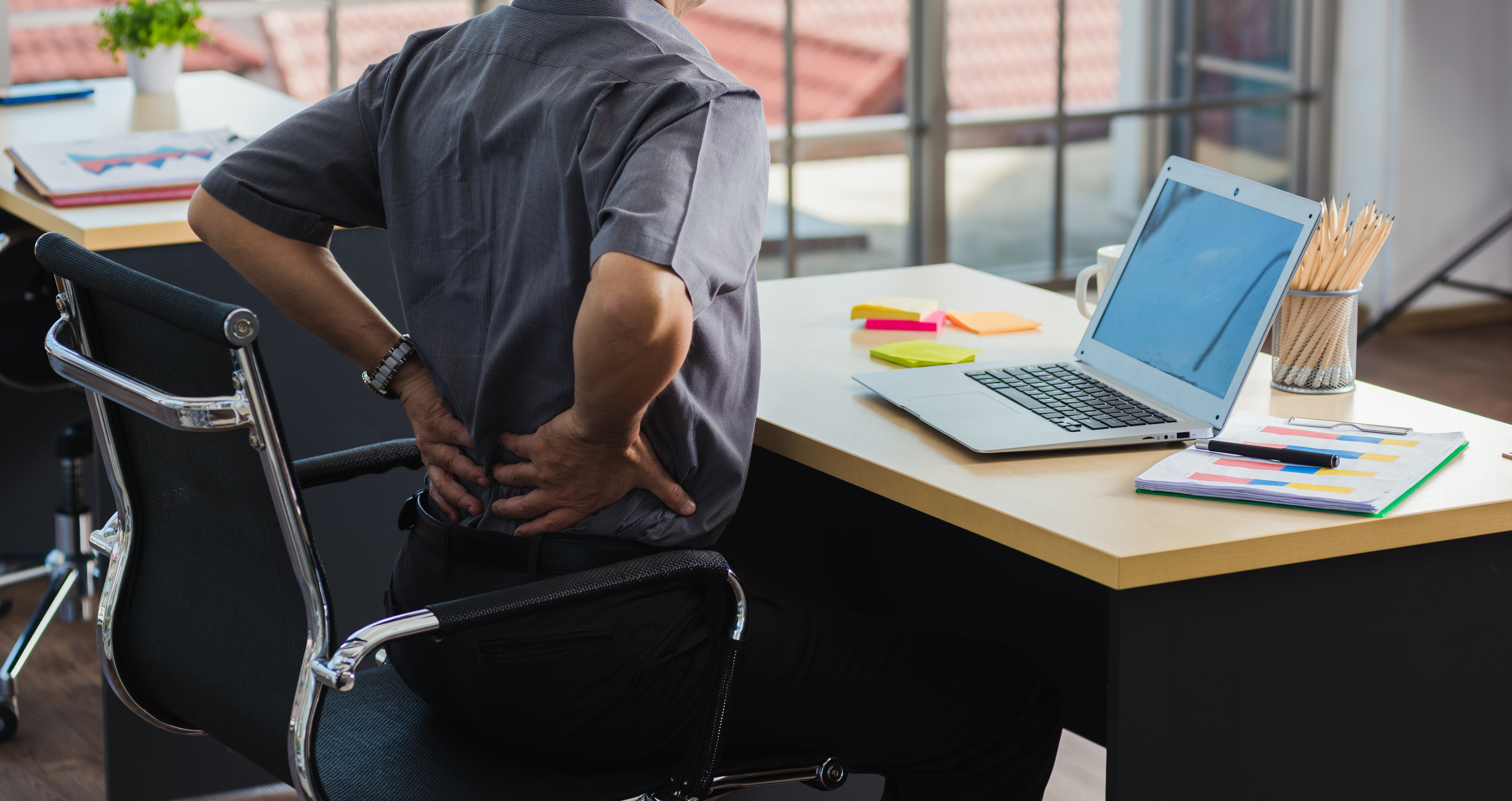The Benefits of Movement While Seated
Sitting Still Isn't Always Best
When people use the computer, they tend to sit in “frozen” positions for hours, forgetting to move. Assuming an uncomfortable position with intense concentration can increase what some refer to as stress immobilization syndrome, or tech stress. The combination of poor ergonomics, intense concentration, and lack of activity can affect any of us when we're captured by the visual magic of the screen. This visually entranced state does come with unhealthy consequences.
Workers who sit in fixed postures experience more discomfort and chronic disorders (Graf, 1993, 1995). It is difficult to tolerate unsupported and static seated postures for more than a short while (Reinecke, 1985).
Static postures can contribute to a broad range of chronic disorders (Hunting 1981) that include joint impairments such as arthritis, inflamed tendons and tendon sheaths, chronic joint degeneration, muscle pain (Grandjean, 1987), impaired circulation and tissue damage (Kilbom, 1986).Static and constrained postures interrupt blood flow in direct proportion to the muscle loads (Grandjean 1987). Studies have linked prolonged sitting to an increased risk of early death, heart disease, diabetes, high blood pressure and obesity, among other ailments.
Movement while seated is critical for a couple of reasons. When we remain in one position, a small number of muscles and ligaments support the back and become tired and strained. Movement transfers the support of the upper body to new muscles and ligaments allowing the strained ones to relax and recuperate.
The second reason that movement is important is that it involves nutrient distribution in the spine. Disc hydration fluctuates naturally and diurnally. That is, over the course of the day/night cycle we (as humans) lose up to 20% of the water out of our spinal discs. Therefore, it is important to offload the spine, especially when sitting for an extended period of time.

Studies Show Movement is Important While Seated
The importance of movement was supported by studies by Kramer (1973), who investigated carefully the nutritional conditions of intervertebral disks. It is well know that the discs themselves do not have a good blood supply. Kramer came to the conclusion that periodical change of the load on the discs is important for their nutrition and therefore also for the resistance against pathological changes.
The periodical change of posture, from forward to recline, creates high and low loading of the discs to provide an effective pump mechanism which provides spinal nourishment. Loading and unloading the spine allows fluid to be pumped into and out of the discs by osmosis to improve the nutritional support to the disks.

Spontaneous activity, something as simple as moving your feet back and forth, while seated can burn more calories than using a standing workstation, according to the results of a recent study. Researchers from the University of Illinois at Chicago and Northwest Community Hospital studied 16 participants’ metabolic rate and heart rate as they progressed through three types of desk workstations: seated, standing and seated with a device designed to stimulate leg movement. Participants spent 15 minutes at each desk.
The researchers found that “modest” movement – the kind unrelated to structured exercise – elevated metabolic rates 17% more than sitting at a desk and 7% more than using a standing workstation. The results are similar to those of a 10-year study conducted by Mayo Clinic that found even small, sometimes fidgety, movements such as tapping your toes – called non-exercise activity thermogenesis, or NEAT – can help counteract a sedentary lifestyle.
The History of the Ergonomic Chair
“These results suggest that non-exercise active thermogenesis can increase movement and calorie burning, and may have the potential to impact health,” Craig Horswill, lead author and clinical professor of kinesiology and nutrition at UIC. “We expected to see the metabolic rate increase with each progressive stage, but instead found that metabolic rates from movement while seated were either equal to or higher than rates while standing.
Peter Opsvik, a Norwegian industrial designer best known for his innovative and ergonomic chairs, coined the phrase“the best posture is the next posture.” It is a phrase many ergonomists and health and safety specialists use today when asked, “what’s the best sitting posture?”

In the 1970s, many experts on ergonomics attempted to establish one correct sitting posture. Peter Opsvik’s contribution has been to create products that inspire variation between many different postures while using the same chair. Opsvik's saddle chair, Håg Capisco, was launched in the 1980s with the goal to create a work chair that would invite the user to assume the greatest number of sitting postures possible.
We are designed to be mobile – not static. While today’s ergonomic work chairs effectively support postural variation and movement, from upright to working reclined postures, fixed work surfaces, desks and height adjustable tables immobilize people as we are tethered to our desktop technology. Given the inability for these two key pieces of furniture to work in harmony, user movement is most often sacrificed.
References
- https://www.sciencedirect.com/science/article/abs/pii/S1529943004006205
- http://www.rstce.pitt.edu/RSTCE_Resources/Resna_Position_on_Tilt_Recline_Elevat_Legrest.pdf
- https://europepmc.org/article/MED/11437206
- http://www.actionofficeinteriors.com/resources/pdf/SUM_Ergo_Review_RaniLueder.pdf
- https://www.academia.edu/13330084/The_Spinal_Curvature_of_Three_Different_Sitting_Positions_Analysed_in_an_
- https://dynamicdiscdesigns.com/disc-hydration-unloading-loading/
- https://www.taylorfrancis.com/chapters/edit/10.1201/9781003069461-17/continuous-passive-lumbar-motion-seating-reinecke-hazard
- https://www.hindawi.com/journals/tswj/2012/184016/
- https://www.ncbi.nlm.nih.gov/pmc/articles/PMC1010338
- https://www.slideshare.net/StephenBrown48/promotingbackhealth
